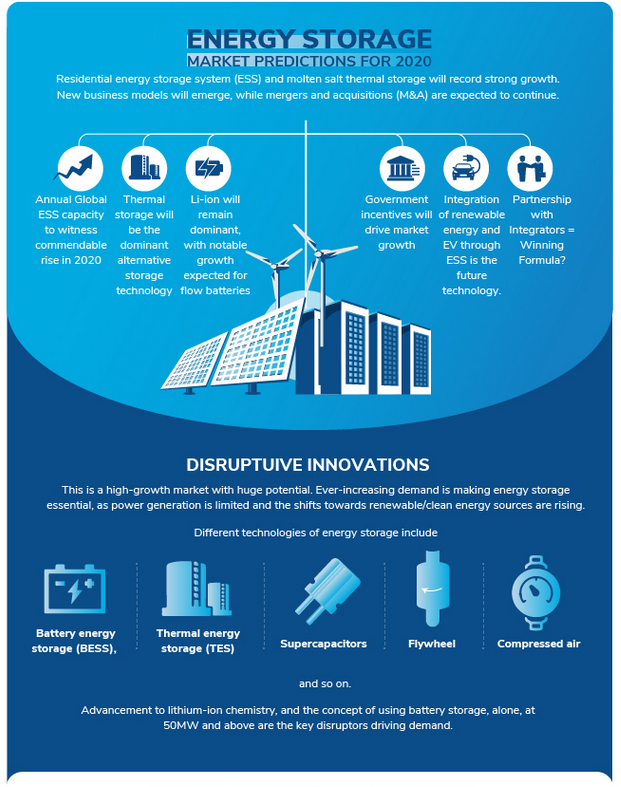US, Germany, Japan and China continue to be key markets on the back of supportive regulations and incentives, finds Frost & Sullivan
Frost & Sullivan – Despite the current COVID-19 pandemic, the medium term future for energy storage remains bright. Frost & Sullivan’s recent analysis, Outlook for the Global Energy Storage Industry, 2020, predicts the market to decline, as project delays, including the lack of access to residential and commercial clients, takes its toll. An additional insight, Global Battery Energy Storage Market, analyzes the impact of the pandemic and notes the market is forecast to rebound strongly in 2021 and experience an accelerated growth period from 2022 onwards, with global annual capacity additions forecast to hit 23.3 GW per year in 2025, up from just 4.1GW in 2019.

For further information on these analyses, please visit: http://frost.ly/444
“The fundamentals behind an investment in energy storage remain strong”, said Jonathan Robinson, Energy Program Lead, Industrial at Frost & Sullivan. “Residential and commercial customers are facing high energy costs and want to do something to reduce them, as well as guaranteeing security of supply –energy storage enables them to achieve this.”
The United States and China are set to be the biggest markets for energy storage in terms of installations and installed capacity. South Korea, which was the global leader in energy storage solutions in 2018, is likely to drop a few positions but remain one of the top five along with Germany and Japan. Among end-user categories, strong progress is forecast across residential, commercial and industrial and grid-scale applications. High electricity prices, declining feed in tariffs, increasing grid demand charges and declining technology and project costs all mean that energy storage is becoming a much more attractive proposition for consumers from households to heavy industry.
“Project sizes and values can vary significantly within the commercial and industrial, and grid spaces, depending on the volume of storage required and for what time period,” noted Robinson. “Each project needs to be thoroughly assessed to ensure the solution is right-sized for customer needs – otherwise the actual ROI will not match the projected one.”
Energy storage system companies can also explore the following opportunities to stimulate growth:
- There will be a growing market for retrofitting existing solar PV systems with additional energy storage capacity, while new solar PV installations will increasingly be paired with a storage system at the time of purchase. To leverage this opportunity, storage manufacturers should develop strong relationships with solar system integrators and installers.
- Leveraging big data analytics will enable utilities to determine likely demand in a particular locality and deal with fluctuating customer loads.
- Battery manufacturers must forge partnerships with energy management solution providers to offer in-built, cloud-based battery monitoring and fault diagnosis platforms with relevant cybersecurity measures to continuously monitor and optimize the performance of a large pool of batteries.
- Battery manufacturers must incorporate machine learning algorithms to develop smart self-learning systems that can optimise storage depending on renewable loads.
- Companies should either develop or partner with the providers of virtual power plant solutions, as these will become increasingly important in the decentralized energy markets of the future.
- Integration of innovative business models and multiple revenue streams such as revenue stacking must be adopted by storage providers to tap the full potential while enhancing the attractiveness of energy storage solutions.
Outlook for the Global Energy Storage Industry, 2020 and Global Battery Energy Storage Market are a part of Frost & Sullivan’s Energy and Environment Growth Partnership Service program, which helps organizations identify a continuous flow of growth opportunities to succeed in an unpredictable future.











